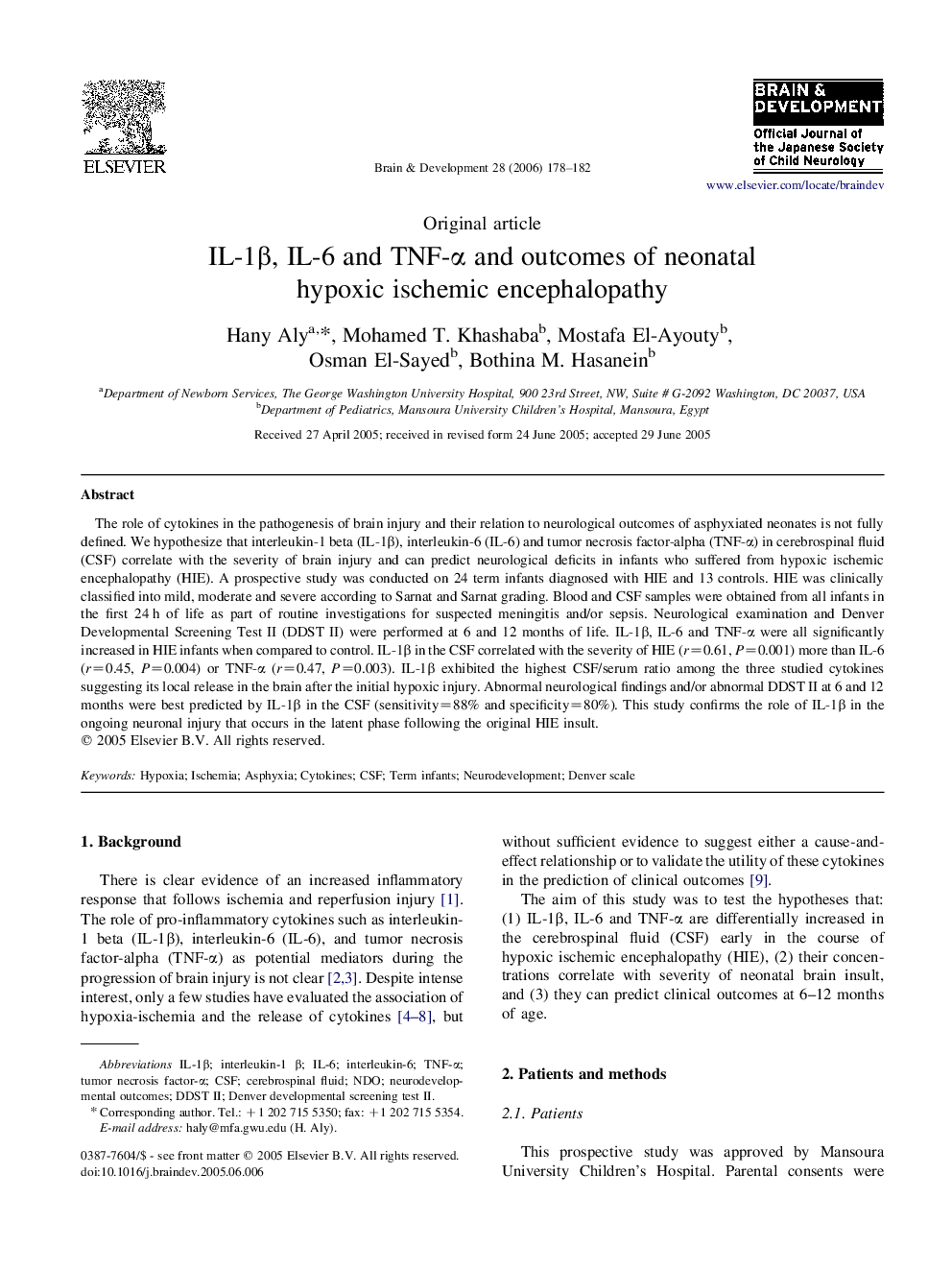| Article ID | Journal | Published Year | Pages | File Type |
|---|---|---|---|---|
| 3038623 | Brain and Development | 2006 | 5 Pages |
The role of cytokines in the pathogenesis of brain injury and their relation to neurological outcomes of asphyxiated neonates is not fully defined. We hypothesize that interleukin-1 beta (IL-1β), interleukin-6 (IL-6) and tumor necrosis factor-alpha (TNF-α) in cerebrospinal fluid (CSF) correlate with the severity of brain injury and can predict neurological deficits in infants who suffered from hypoxic ischemic encephalopathy (HIE). A prospective study was conducted on 24 term infants diagnosed with HIE and 13 controls. HIE was clinically classified into mild, moderate and severe according to Sarnat and Sarnat grading. Blood and CSF samples were obtained from all infants in the first 24 h of life as part of routine investigations for suspected meningitis and/or sepsis. Neurological examination and Denver Developmental Screening Test II (DDST II) were performed at 6 and 12 months of life. IL-1β, IL-6 and TNF-α were all significantly increased in HIE infants when compared to control. IL-1β in the CSF correlated with the severity of HIE (r=0.61, P=0.001) more than IL-6 (r=0.45, P=0.004) or TNF-α (r=0.47, P=0.003). IL-1β exhibited the highest CSF/serum ratio among the three studied cytokines suggesting its local release in the brain after the initial hypoxic injury. Abnormal neurological findings and/or abnormal DDST II at 6 and 12 months were best predicted by IL-1β in the CSF (sensitivity=88% and specificity=80%). This study confirms the role of IL-1β in the ongoing neuronal injury that occurs in the latent phase following the original HIE insult.
